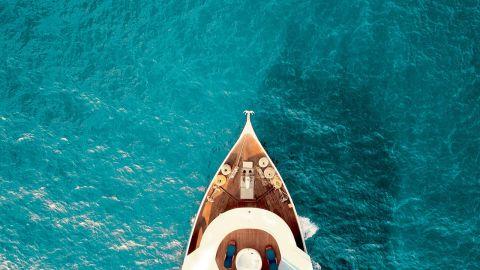Robots trying longest ever unmanned marine voyage
24 November 2011 – A quartet of robots set out last week on a 300-plus day journey that will take them 33,000 nautical miles across the Pacific Ocean — the longest voyage ever attempted by an unmanned sailing craft, according to various reports.
BBC News reported last Friday that the four robots, which were created by an American company called Liquid Robotics, departed from the St. Francis Yacht Club in San Francisco on November 17. At first they will travel together before pairing off into groups of two, one of which will head to Australia and the other embarking en route to Japan in order to support a Mariana Trench dive.
“During their 300-day journey, the surfboard-sized Wave Gliders… will collect vast amounts of real-time data on ocean conditions and beam it to the cloud where it will be made available free to researchers worldwide,” Todd Woody of Forbes said in an article Friday.
He added the journey could be a “perilous” one as the robots “will pass the Pacific gyre — aka the ‘garbage patch,’ an area of the ocean polluted with untold tons of plastic and other human-generated trash — and must navigate treacherous currents around the equator.”
Along the way, the robots will be collecting data that will be streamed live through the Iridium satellite network, according to Tekla Perry of IEEE Spectrum. In fact, the company said in a statement posted to their official website that they believe that the robots will be able to collect more than 2.25 million different bits of data along the way.
All of the information gathered throughout the course of the journey — which will include data on salinity, water temperature, weather, fluorescence, etc. — will be made available to scientists and researchers free of charge, and more accessible, user-friendly versions of the data will be presented to the publish via Google Earth’s Ocean Showcase, Perry said.
The expedition is being supported by Google Earth, as well as Richard Branson’s Virgin Oceanic.
“At Virgin Oceanic, our mission is taking the next step in human exploration to the last frontier — the very bottom of our seas. I will be piloting to the bottom of the Mariana Trench to explore the deepest point of the Pacific Ocean,” Chris Welsh, co-founder and pilot for Virgin Oceanic, said in a statement. “Wave Gliders are one of the most promising solutions for major, low cost, long-range ocean exploration. I look forward to seeing the results as their Wave Gliders cross over the Mariana Trench, which is our first major dive location. I applaud Liquid Robotics as they launch their Wave Gliders on the PacX grand challenge and join us in exploring our vast oceans.”
“Most of the ocean remains unexplored with less than 10 percent of it mapped out. This expedition creates an opportunity for students, marine researchers, and aspiring oceanographers to follow these brave Liquid Robotics ocean robots as they cross the Pacific virtually through the Ocean Showcase on the Google Earth website. They can also check back daily in Google Earth to see the latest posts from scientists communicating weather and climate data back from these ‘R2D2s’ of the sea,” added Jenifer Austin Foulkes of Google Earth.
According to Perry, Liquid Robotics sells the Wave Glider robots being used in the expedition commercially. Each unit costs approximately $200,000.


